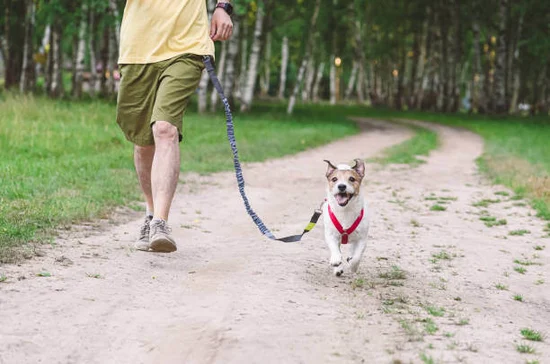There’s nothing like hitting the trails with your furry friend, but to ensure your dog enjoys the adventure as much as you do, it’s crucial to pack wisely. From hydration to snacks, having the right gear can keep your dog energized and comfortable throughout your journey. In this guide, you’ll learn what items you should include to make your trail outing safe, enjoyable, and memorable for both you and your dog.
Essential Gear for Safety and Comfort
Equipping your dog with the right gear ensures a safe and enjoyable trail adventure. A well-fitting harness provides better control and reduces the risk of injury, while a sturdy leash keeps your dog securely by your side. Consider investing in travel-friendly gear that promotes comfort and protection against varying trail environments.
Choosing the Right Harness and Leash
Selecting a harness designed for your dog’s specific size and breed enhances mobility and prevents strain. Opt for a leash that allows for adequate length while maintaining control, as this balance aids in exploring while ensuring safety in crowded or tricky areas.
The Importance of a Dog-Friendly Backpack
A dog-friendly backpack allows your pup to carry their imperatives, contributing to a sense of purpose and excitement on the trail. It’s imperative to choose one that is lightweight and fits your dog comfortably without restricting movement. Ideally, the backpack should have adjustable straps and padded sections to prevent chafing, making it easier for your dog to wear throughout the hike.
Having your dog carry their water, snacks, and even waste bags in their own backpack can significantly reduce your load and make the adventure more enjoyable for both of you. This simple act helps instill a sense of teamwork and can keep your dog engaged, making them feel like an active participant in the journey. Just be sure to keep the weight proportionate to your dog’s size, typically no more than 10-15% of their body weight, to ensure they remain comfortable and happy on the trail.
Hydration Essentials: Keeping Your Dog Cool and Well-Watered
Staying hydrated is vital for your dog’s health on the trail. As temperatures rise, your pup can easily become overheated or dehydrated, leading to fatigue or even more serious health issues. Regular water breaks during your hike will keep their energy levels high and spirits up. Pack ample water to share, and be strategic about ensuring your dog gets enough to drink throughout your adventure.
Selecting the Best Portable Water Bowls
Opt for lightweight, collapsible water bowls that are easy to carry and set up on the go. Look for models made of durable materials that can withstand some wear and tear, as well as those with wide openings for easy access. There are also options with integrated storage or collapsible features, making it easier to pack in your backpack without taking up too much space.
How to Hydrate with Specialized Dog Packs
Consider using specialized dog packs equipped with hydration systems. These packs typically include built-in water bladders and tubes, allowing your dog to drink without you stopping frequently. With these packs, your pup can stay hydrated even as you forge ahead. You’ll find designs tailored for various dog sizes, ensuring a comfortable fit. Regularly monitor their hydration status, especially during long hikes, to maintain their well-being.
Nutritional Needs on the Trail
Keeping your dog energized and hydrated on the trail is vital for their overall well-being. Active days outdoors require a diet that not only sustains their energy levels but also maintains their hydration. Opt for foods rich in protein and healthy fats while ensuring a balance of carbohydrates. During your adventure, consider how your dog’s size, breed, and activity level influence their nutritional needs to tailor their diet appropriately.
Selecting the Right Trail Snacks
Snacks on the trail serve to not only replenish energy but also to keep your dog motivated during the hike. Look for high-quality, lightweight treats that are easy to carry, such as freeze-dried meat or high-protein bars designed for dogs. These snacks should be palatable and easily digestible, providing a quick energy boost while ensuring your dog remains enthusiastic about their surroundings.
Meal Planning for Long Adventures
For extended trail adventures, meal planning becomes important to maintain your dog’s energy levels. Calculate the daily caloric needs based on their weight and activity level, and adjust portion sizes as necessary. Pre-packaging meal portions in resealable bags can streamline feeding and minimize the mess while ensuring your dog receives the right nutrition at the right time. Incorporating a blend of dry kibble with canned food or fresh produce can enhance hydration and flavorful appeal, keeping your pet excited about meal times.
First Aid Fundamentals for Canine Hikers
Being prepared for potential injuries on the trail ensures a smooth experience for both you and your dog. In the great outdoors, accidents can happen, so an understanding of first aid will help you act swiftly. Whether it’s a minor scrape or a more severe injury, having the right tools and knowledge allows you to manage situations effectively, keeping your canine companion safe and healthy throughout your adventure.
Essential Items for a Dog First Aid Kit
A well-stocked dog first aid kit is important for any hiking trip. Include items like antiseptic wipes, adhesive bandages in various sizes, gauze pads, a digital thermometer, and tweezers for splinter removal. You should also pack a muzzle, as even the gentlest dogs may bite when in pain, along with a leash to help control your pup if injured. Lastly, consider including your veterinarian’s contact information and any medications your dog may need while out on the trail.
Common Injuries and How to Handle Them
While hiking, a few common injuries can occur, such as cuts, abrasions, and insect bites. For minor cuts, clean the area with antiseptic wipes, apply gauze, and secure it in place with adhesive tape. In case of insect bites, remove the stinger if present and apply a cold pack to reduce swelling. For larger wounds, it’s best to apply pressure and seek veterinary assistance promptly. Muscle strains may also happen; resting your dog and gently stretching the affected area can help.
Dogs can encounter specific types of injuries while hiking, and knowing how to respond can make all the difference. In addition to cuts and scrapes, paw pad injuries from sharp rocks or hot surfaces are quite common. Inspect their paws regularly, and clean any foreign debris. If bleeding occurs, apply pressure using a clean cloth, elevating the paw if possible. If your dog is limping, carefully examine their legs for signs of strain or injury. At times, simply resting may be sufficient, but longer-term issues require a visit to the vet to ensure proper recovery.
Outdoor Exploration: Environmental Considerations
Your dog’s trail adventure should involve careful consideration of the environment to ensure their health and happiness. Exploring natural areas is thrilling but comes with responsibilities. Familiarize yourself with local regulations, trail etiquette, and environmental concerns. Understanding the ecosystem and practicing Leave No Trace principles helps maintain the beauty of nature for future explorers. By being prepared and respectful, you contribute to the harmony of outdoor spaces, benefiting both your pet and wildlife.
Understanding Local Wildlife Risks
Each region has its own set of wildlife risks that can affect your dog’s safety during an adventure. Research the local wildlife, such as snakes, bears, or aggressive birds, and be aware of their habitats and behaviors. Certain areas may also pose risks from ticks or other parasites. Keeping your dog leashed in potentially dangerous areas minimizes encounters, while whistle training can help recall your furry friend if they get curious.
Preparing for Weather Changes
Weather conditions can shift unexpectedly during outdoor excursions. Packing suitable clothing for your dog assists in keeping them comfortable in variable temperatures, whether it’s building a protective layer against rain or ensuring breathability on hot days. Portable water bowls are imperative for hydration, especially in heat, while reflective gear can enhance visibility during cloudy and dusky conditions. Monitoring local forecasts before heading out and bringing a first aid kit prepared for weather-related emergencies can keep your trail adventure worry-free.
Being proactive about sudden weather changes ensures that your dog’s trail experience remains enjoyable. For instance, temperatures can drop significantly as you ascend elevations or come late afternoon, so layering options for dogs are key. Rain jackets not only protect against moisture but also provide warmth. In hot weather, consider cooling vests or bandanas to regulate their body temperature. By anticipating these shifts and adjusting your packing list accordingly, you create a safer, happier adventure for your furry companion.
Conclusion
Presently, packing the right items for your dog’s trail adventure is imperative to ensure their happiness and well-being. Include sufficient food and water, a comfortable leash and harness, first aid imperatives, and waste bags. Don’t forget your dog’s favorite toys or blankets to provide comfort. Always check the weather to dress them appropriately. By planning ahead and considering your dog’s needs, you can create a memorable and enjoyable experience for both of you in the great outdoors.





